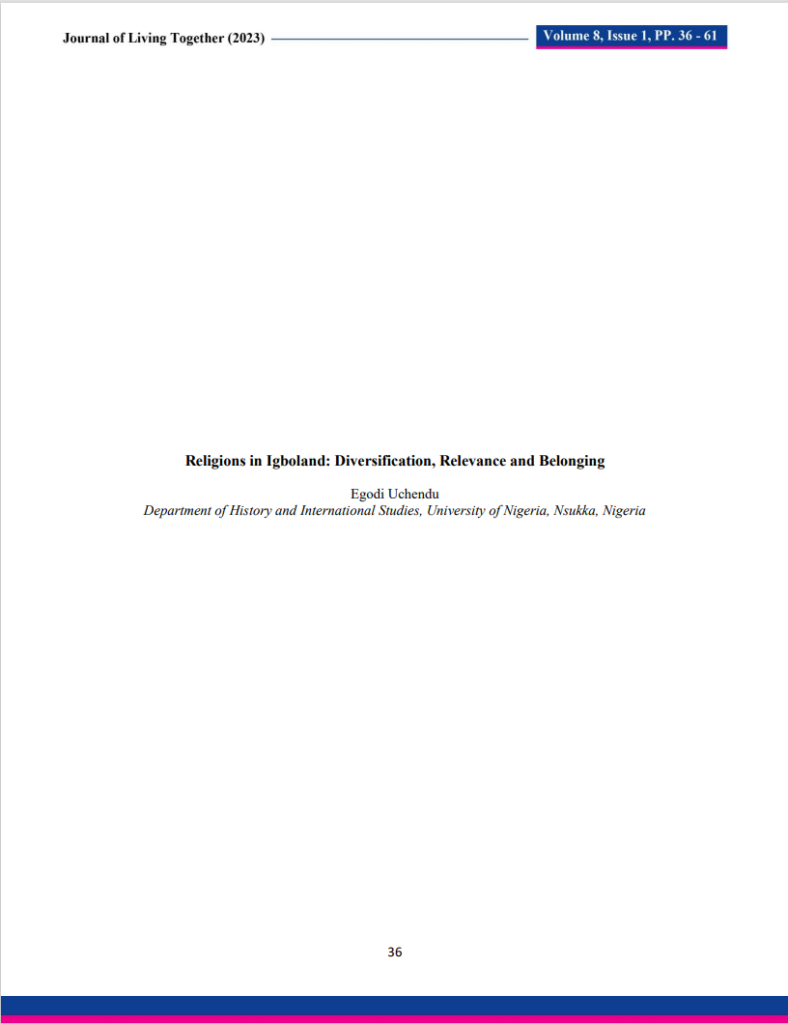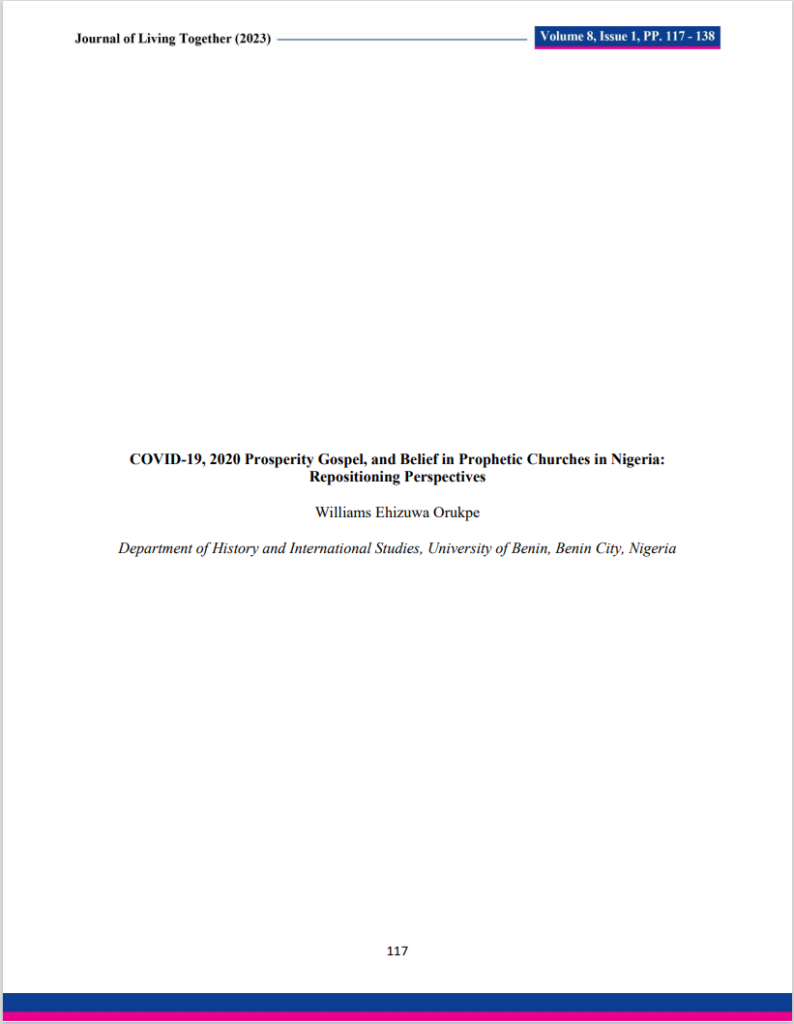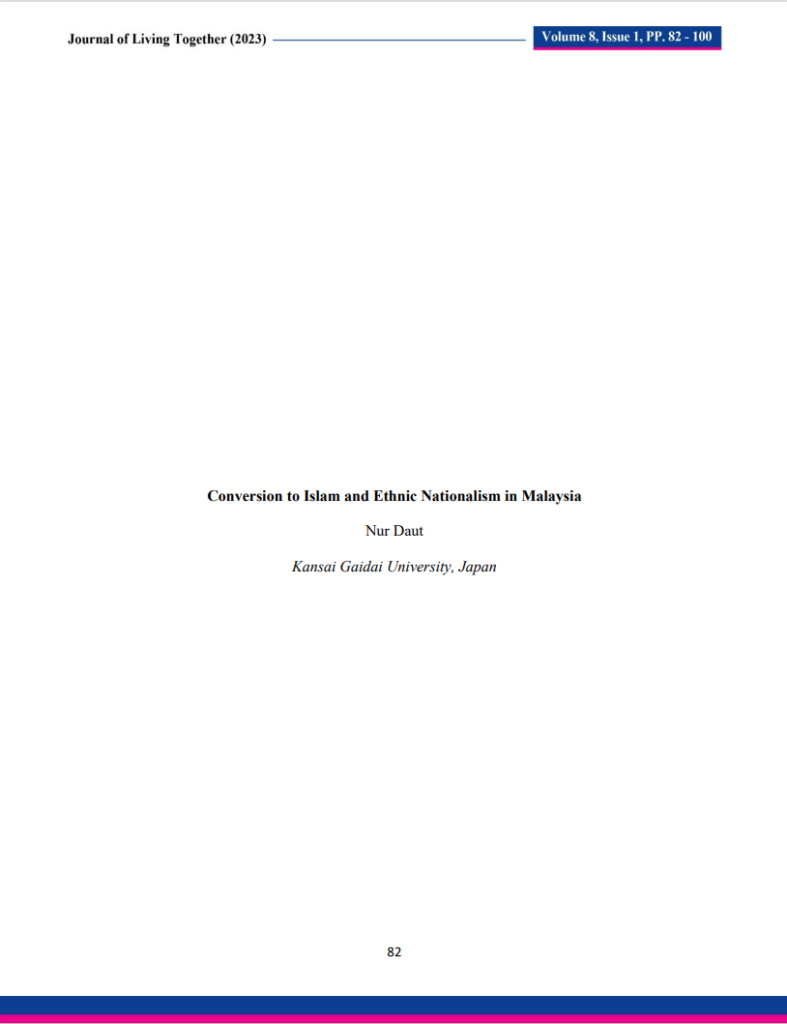Apocalyptic Violence and the Fundamentalist Mindset: Why Do the Groups Follow?
“Apocalypsis” is a transliteration of the Greek word apokalypsis meaning “to uncover or disclose.” Within the Judeo-Christian tradition it means the specific ways in which God reveals himself or herself to humans. For nonliteral Christians, such “revelation” of the ultimate can come close to what is called “insight” in psychoanalysis, or that profound understanding that connects thoughts and feelings at their deepest levels. Prophecy, in turn, is the form of our access to that apocalypse, though some scholars have distinguished the prophetic from the apocalyptic traditions. In prophetism, it is argued, we are called to a change of heart, to repentance in the present and to a new way of living. It is a call to efficacy and a challenge to change so that we can avoid catastrophe. In the apocalyptic, or the already-determined future, hope is deferred, which is why it is so often associated with the poor, the broken-hearted, the oppressed—and why it is so often associated with violence.
Endism, as I called it in 1994 (in Apocalypse: On the Psychology of Fundamentalism in America, Beacon Press), is the location of self in some future narrative. I use that idea as a psychological construct but recognize the endist narrative is also not one thing but has itself evolved historically, from the Egyptian Book of the Dead in the 13th Century b.c.e., with its exotic ideas of the second and final, ultimate death; to the early Zoroastrians some six centuries later, with their simpler and more focused ideas that have so influenced the Judeo-Christian traditions; to the later biblical prophets in the Hebrew Bible, including Daniel (ca. 200 b.c.e.); to John of Patmos in 95 c.e., who created in Revelation the Ur text of apocalypse for all the Abrahamic faiths and most others as well, a vast image of God’s destruction that makes Him, in the words of James W. Jones, a “divine terrorist”; to Joachim of Fiore (1135-1202) in the Middle Ages; but in no way more importantly than in our recent historical discovery of the ultimate power of the destruction with nuclear weapons and increasingly with other biological agents.
Nuclear weapons and the endist narrative are at the heart of things. We attribute to the Divine the power to create and destroy, that is, of beginnings and endings, but we are most anxious about death. We all die, and the extension of that foreknowledge—which is what most decisively distinguishes us from the higher primates–to the potential end of human life itself served originally as a creative force in the making of culture some 8,000 years ago. The human reached out to the Divine. Over time and with traditions of ritualization, culture assigned the task of imagining the end to three important but relatively marginal groups: mystics, artists, and psychotics. The apocalyptic remained at the edge, but such intellectual and spiritual themes were neither static nor predictable. The sense of collective endings ebbed and flowed with historical change. During and after times of great crisis, for example, as the plague in Europe between 1348 and 1351 when more than a third of the population was wiped out, apocalyptic thinking more forcibly entered the mainstream. During times of relative peace, as in the 18th century, it then receded back to the margins of imagination.
Splitting the atom and the destruction that event releases altered the dynamics of our sense of Divine power. It took away from God the power to destroy and put it in human hands. Nuclear weapons—and increasingly other means of destruction—shift the agency. We don’t need God anymore to end life. That is deeply confusing. The apocalyptic narrative has always been simultaneously one of violence and redemption, of endings that are new beginnings, of vast death that cleanses the world of sin and leads to new life. There is hope, as exemplified in the role of the Messiah, whether he comes, or comes again. In a nuclear end, on the other hand, there is only death. It is an entirely “pointless” apocalypse, as Robert Jay Lifton has put it (The Broken Connection, Basic Books, 1979). We therefore live in the present in our imagination as survivors of future apocalypse. The shadow of the future casts doubt on our capacity to inhabit it.
All that has led me in the last decade to try and think more deeply about what I have called a “fundamentalist mindset.” (The Fundamentalist Mindset, Oxford University Press, 2010, of which I was the lead author and co-editor). Given our new relationship to these ultimate issues, it is not surprising we live in world awash in apocalyptic themes and new forms of fundamentalism have sprouted like a disease of epidemic proportions. There is, I think, a fundamentalist mindset, rooted in the past but newly energized, one that transcends its particularity in contemporary religious movements. Islamists, for example, have fueled the global jihad; evangelicals have pushed Christianity to the right in this country; and the settlers in Israel have evoked a new millennialism about Jewish land not seen in centuries. They overlap in curious ways. The haredi rabbis and Islamist imans wear the same beards. Christian preachers in Alabama ranting about women or homosexuals can sound strangely like jihadi fanatics. And so it goes.
Such religious fundamentalist movements can be quite noisy and seem to define the phenomenon. But the mindset of fundamentalism is something more deeply ingrained in the self that finds expression in a variety of human institutions, including religion but no means restricted to it, and has a history that gives it protean meanings over many centuries. Norman Cohn, for example, has described cultic groups at the fringes of society in the Middle Ages. The “Terror” of the French Revolution realized the paranoid and destructive potentials of a revolution that otherwise expanded human freedom. Nazism was undoubtedly the most important fundamentalist, millennial movement in the twentieth century, if not in human history. The current Tea Party movement in the United States merges populist and racist ideas in a millennial movement aimed at renewal of politics. The individual and the collective, that is, psychology and history, work synergistically to create, diminish, aggravate, and heal the many forms of fundamentalism in religion, politics, and culture.
There are aspects of the fundamentalist mindset that are not relevant for our inquiry today—its tendency toward literalism, the way those who inhabit that psychological space are susceptible to charismatic leaders, and the nature of the conversion experience that brings people into totalistic communities that can be so destructive. What is relevant, however, is the relation of the apocalyptic to time and paranoia.
First, time. Phillip Rieff in his wonderful 1962 study, Freud: The Mind of a Moralist, characterized Freud’s ideas in terms of kairotic time. Cartesian time is chromatic, evenly spaced, regular, and entirely predictable, able to be measured with amazing degrees of accuracy that has been the basis for the creation of the modern. Kairotic time, on the other hand, comes in many shapes and is completely irregular and uneven. Freud located key transformative moments in childhood around which crystalize all that matters then, or later, and which he named the Oedipus Complex. More broadly, his philosophical approach to time has shaped the central focus now in psychoanalysis on trauma. For in trauma, a black hole of misery collapses time and space.
That is central to understanding apocalyptic time, which is deeply kairotic in nature. Such time is not linear or homogeneous but is weighted by value and experienced in an uneven, discordant fashion. Like trauma experienced by an individual, such experience of time is psychologically and spiritually different from history as we know it. In the apocalyptic the only meaningful future event is the transformative end of the world, followed by salvation. Apocalyptic believers are not living within time but rather escape history by destroying time, thereby freeing themselves of responsibility for the world. Kairotic time is always running out, and urgent expectation of the end frames believers’ logical, spiritual, and ethical deliberation.
What is troubling in this narrative is that the transformative moment at the end of time in the apocalyptic imagination is always one of great violence. It is a death-drenched story. The book of Revelation, for example, with its three waves of destruction unfolding in patterns of sevens, with seven digressions of great significance folded into the text, depicts rivers of blood that run up to the bridles of horses, Satan unloosed from the depths, and an angry Messiah riding a white horse with a suggestive phallic sword coming out of his mouth. But out of such violence comes redemption. Death is regenerative, as the new heaven and a shining Jerusalem with 12 gates and foundations “garnished with all manner of precious stones” welcomes the reborn. Sinners, on the other hand, forever swim in the lake of fire.
The narrative fits the more extreme dualistic fantasies of paranoia that feed on the desire to destroy the evil persecutor. Such fantasies lurk in the heart of troubled individuals but also have a place in the collective, that is, in history, in terms that my colleague, David Terman, has called a “paranoid gestalt.” Again, such ideas have grounding in the hopeful. Among religious fundamentalist believers there is nothing more basic to their belief system than hope for the coming, or return, of the Messiah. For secular millennial movements, such as the Nazis and their vague notions of the thousand-year Reich, the redemptive goals are elusive but equally central to their aspirations. But in the apocalyptic narrative there can be ultimate salvation only with the absolute destruction of the world and its evils. That evil can be constructed as counter-revolutionary forces for Robespierre, Jews and other “life unworthy of life” for the Nazis, and echoes of such ideas about Obama and the government for the Tea Party. The end of evil through collective death, however, overcomes death itself in a remaking of the world that brings with it powerful hope. This transcendent process totalizes the other, requiring radical dualisms and evokes evil in paranoid ways. This remarkable link between paranoia and the apocalyptic gives us insight into the violent potentials in the fundamentalist mindset.
Certain things are clear about paranoia. Someone in its grip lives in a world of heated exaggerations, in which empathy has been leached out and where humor, creativity, and wisdom are absent. The paranoid lives in a world of shame and humiliation, of suspiciousness, aggression, and dualisms that separate out all good from pure evil. The paranoid is grandiose and megalomaniacal, self-centered to a fault, and lives within the apocalyptic. Many paranoids are very smart, and I have long felt it may be the pathology of choice for the gifted. There is no question that paranoia focuses all of one’s cognitive abilities in ways that can make one’s schemes intellectually daunting.
In paranoia everything is intense and of the moment, and time is forever running out. The paranoid’s understanding of history is truly diseased. Great forces are arrayed against the paranoid; in fact, virtually the workings of the cosmos itself are aligned to punish and persecute the victim who, it can be said, suffers from history. One is helpless and beaten down, but this keen sense of victimization and negative grandiosity (“No one has suffered as much as I have in the face of this persecution”) readily turns positive in its most malignant form (”I am actually greater than my tormentor”; “I am the creator”; “I am Napoleon”; “I am Jesus”). That is the source of the secret joy one often sees in the depressed eyes of the paranoid. The conspiracies that abound in the mind of the paranoid, furthermore, are not just isolated events that affect him or her, but are actually the very motive force of history. There is nothing of consequence to understand in the world except how these large conspiracies work, which explains why paranoia is so totally self-absorbing.
Violence lurks in this nexus of paranoia and the apocalyptic. The other becomes the embodiment of evil. As such that malignant other deserves not simply to be punished but can be, indeed in more extreme historical situations of crisis must be, dispensed with. It is not simply an allowance to kill. Killing becomes an obligation and to act against the perceived tormentor in the name of self-protection is to become a savior. Violence heals and redeems. Because one acts on behalf of absolute righteousness, a sense that history itself is being cured, killing becomes healing and is therefore an ethical obligation, as Robert Jay Lifton has described so well with the Nazi doctors. People commit personal violence for all kinds of idiosyncratic reasons. They murder loved ones, rape, plunder, rob, and steal for selfish, mean, and sometimes psychotic reasons. But people commit genocide out of a moral purpose to cleanse the world of evil. You cannot kill on that scale without a sense of higher purpose, albeit one that is tragically perverse.
In its deeper and totalized meanings, paranoia thus becomes apocalyptic. I have mentioned the dramatic historical examples of the French Revolution when, between September 1793, and July 1794, tens of thousands died and over 16,000 heads literally rolled off the guillotine in Paris in a frenzy of revolutionary fervor, as well as the Holocaust, in which millions died and were incinerated in those dreadful crematoria. But with nuclear and other ultimate weapons in the world, we live now with the apocalyptic more firmly planted in our minds because of our new relationship with death. It lurks just below the surface, often in confusing ways, as I discovered most poignantly in my interviews with 9/11 survivors and witnesses (Until the Fire Stopped Burning, Columbia University Press, 2011).
Our apocalyptic sense of the event shaped the response and our wars. George Bush, shortly after he proclaimed a crusade and a “war on terror”, enjoyed a 91% support in December 2001. It led instead to two wars and great death. I don’t believe we are stronger for having survived 9/11. Something broke in us and it will take a long time to heal.
There is hope. I’ve been thinking about this stuff now for decades and gotten very close to those who embrace the apocalyptic—in my interviews with Christian fundamentalists in the 1990s when I spent five years going to their churches in New York; with survivors and witnesses of 9/11; with many of my traumatized patients after 9/11 (my office is in Greenwich Village); with my students, many of whom were traumatized firemen and police who had been there and later worked on the pile and took all my courses on terrorism to try and understand what had happened; and with my relatives in Georgia. Sometimes it all touches my soul in perplexing ways, haunting my dreamscape with images of violence that leave me shaking. But to understand contemporary life, one must grapple with these issues. I often tell my students that if you don’t think about nuclear weapons and the apocalyptic, you aren’t thinking. At the same time, don’t yearn for destruction to remake the world. The only thing that matters is a human future, and our most important ethical obligation is to hand off the world and life itself to future generations.
This paper was presented at the International Center for Ethno-Religious Mediation’s 1st Annual International Conference on Ethnic and Religious Conflict Resolution and Peacebuilding held in New York City, USA on October 1, 2014.
Insights from the Experts:
“Apocalyptic Violence and the Fundamentalist Mindset: Why Do the Groups Follow?”
Presenter:
Charles B. Strozier, Ph.D., Psychoanalyst, Professor of History and founding Director of the Center on Terrorism, John Jay College, City University of New York.



